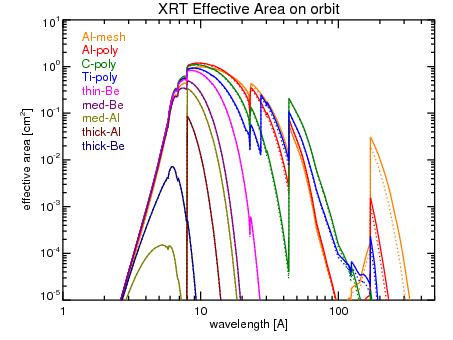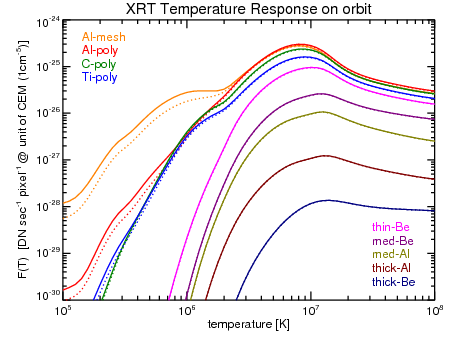
Project Overview
- Analyze x-ray irradiance for full solar cycle
- Characterize dependence of the irradiance on solar latitudes
- Inspect irradiance dependence on specific solar structures
Mid-research Reminders
- Hinode (Sunrise)
- Solar Optical Telescope (SOT)
- Extreme Ultraviolet Imaging Spectrometer (EIS)
- X-Ray Telescope (XRT)
- Analyzed data
- XRT Synoptic Compotie Database at MSU
- Composite images
- Three exposures
- Long, medium, short
- Increased dynamic range
- Data masked to 1.1 solar radii
- Three exposures
- Aluminum mesh & Titanium poly filters
- Movies created
Coronal Temperature Analysis: Filter ratio method
- 2008-2012

- Energy of photons measured using the energy of electrons from the ccd
- Ne is electron density
- P is emissivity as function of wavelength
- ηi is telescope effective area, where i denotes filter number
- Product of aperature, mirror, filter, ccd quantum efficiency
- Assuming isothermal plasmas


- This gives the filter ratio as a function of temperature (T)
- Each filter has different temperature response
- Al_mesh able to see cooler plasmas than ti_poly


Assuming coronal elemental abbundance:

- A video of the 2010 al_mesh and ti_poly filter comparisons seen here.
Results
- Temperature and volume emission measure plots can be seen here.
Summary
- Full sun coronal temperature and emission measure calculated using full-sun images
- X-ray images
- 2008-2012
- 2009 temperature 106.06 (~1.1MK) at solar minimum
- Temperature increase to 106.2 (~1.6MK) in 2011
- Volume emission measure given by Ne2 V
- Uses electron ccd count
- Data problems
- January 2008 index error
- Filter problems
- May 2012 calibration shift begins
- Caused by increased stray light leak
- January 2008 index error
In Conclusion

Sources
Hara, H. et al "High-Temperature Plasmas in Active Regions Observed with the Soft X-Ray Telescope aboard Yohkoh." Publ. Astron. Soc. Japan 44 (1992): 135-140. Print.
Narukage, N. et al "Coronal-Temperature-Diagnostic Capability of the Hinode/X-Ray Telescope Based on Self-Consistent Calibration" Solar Physics (2011): 169-236. Print.